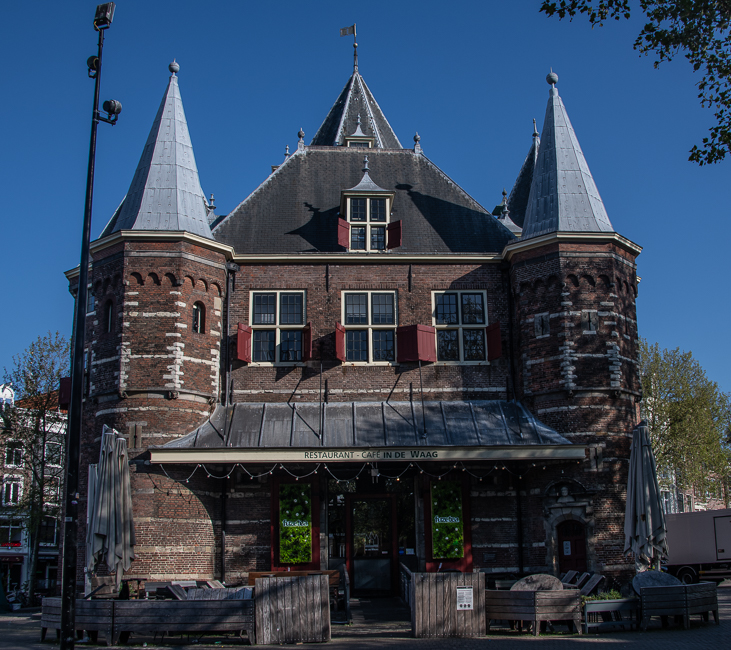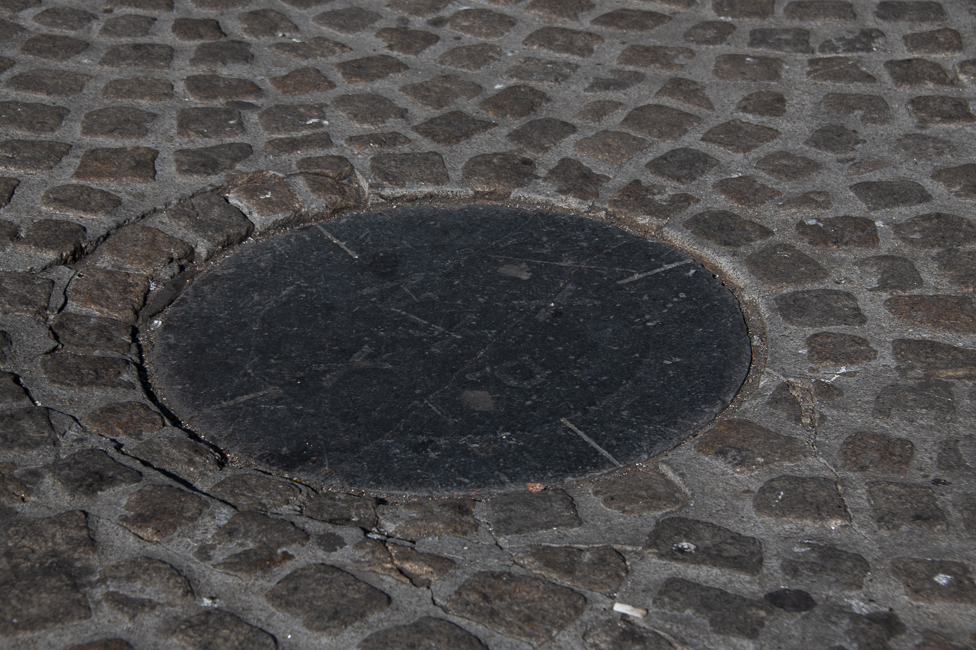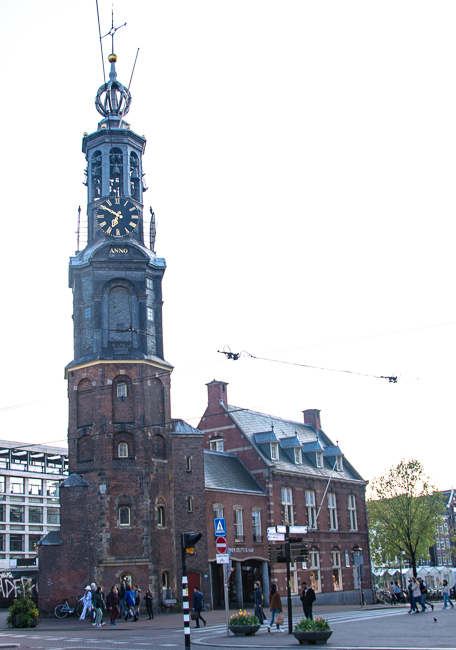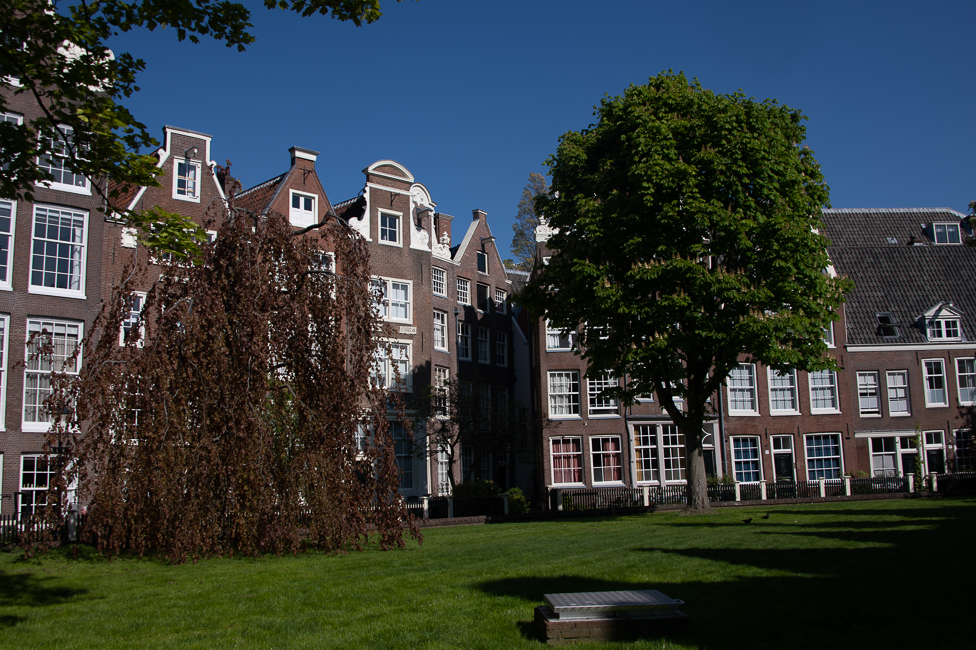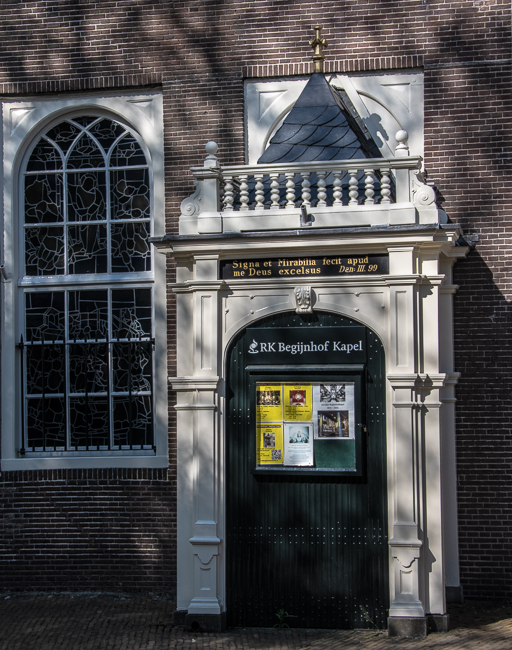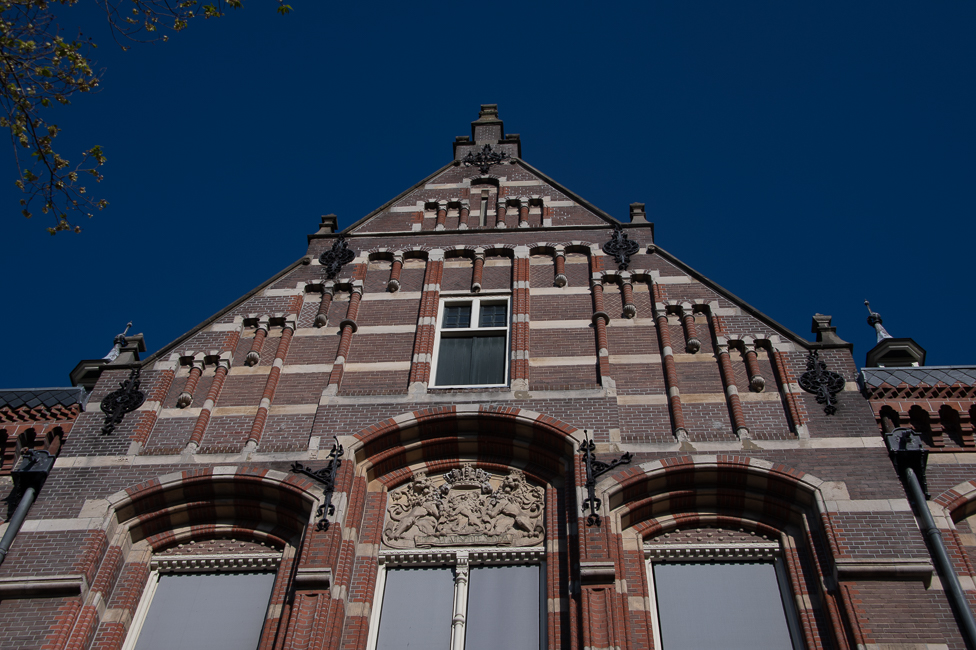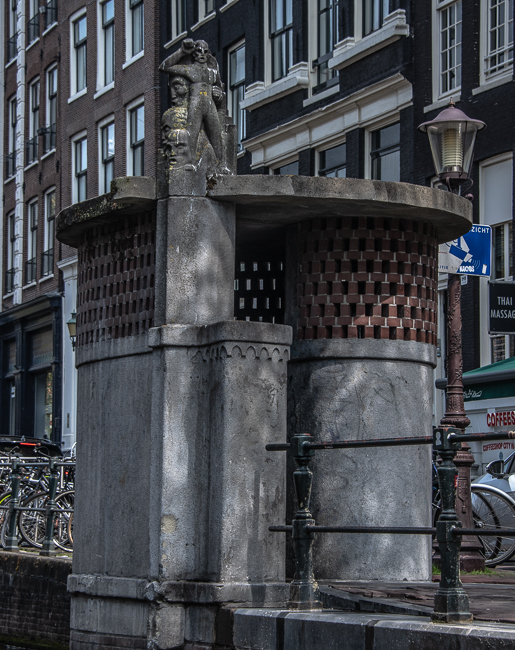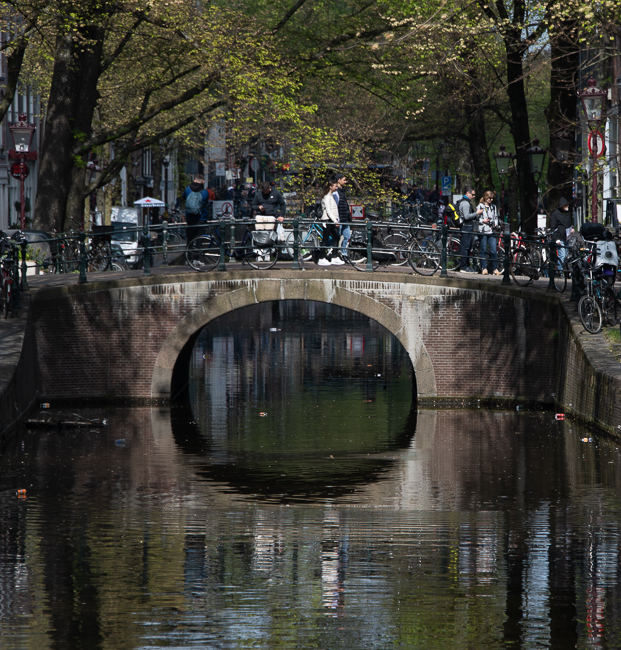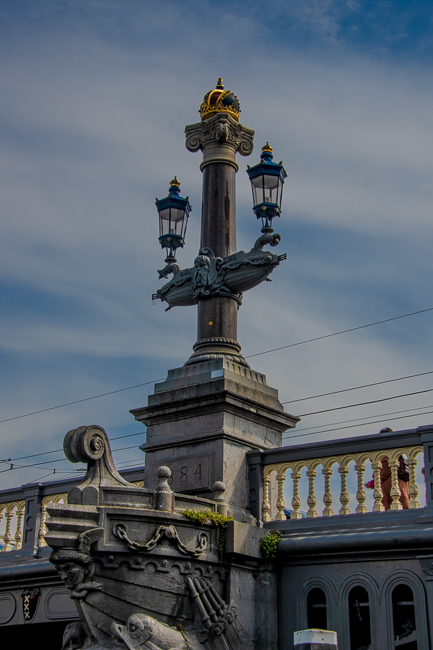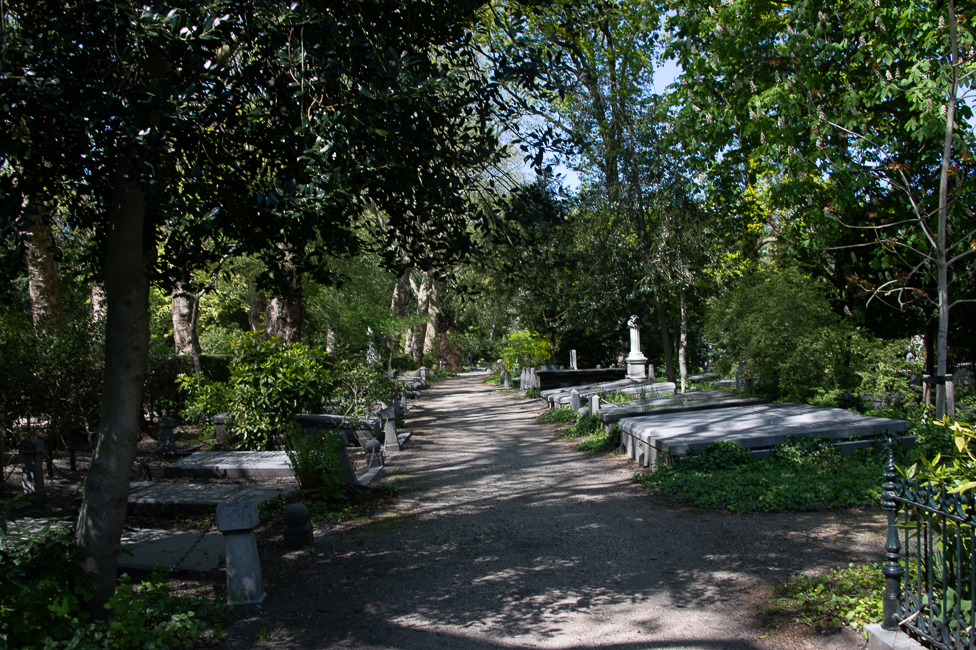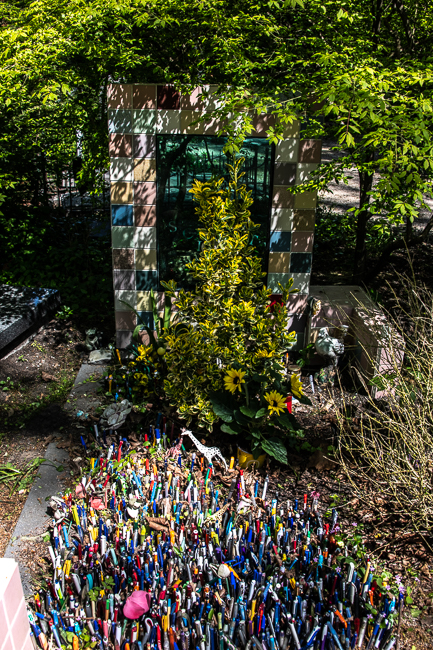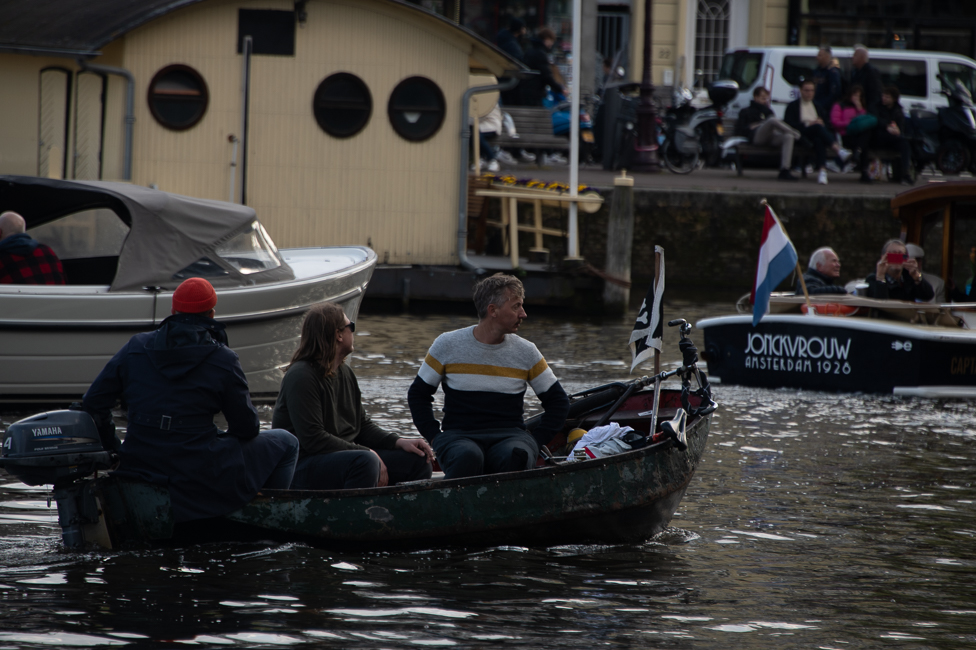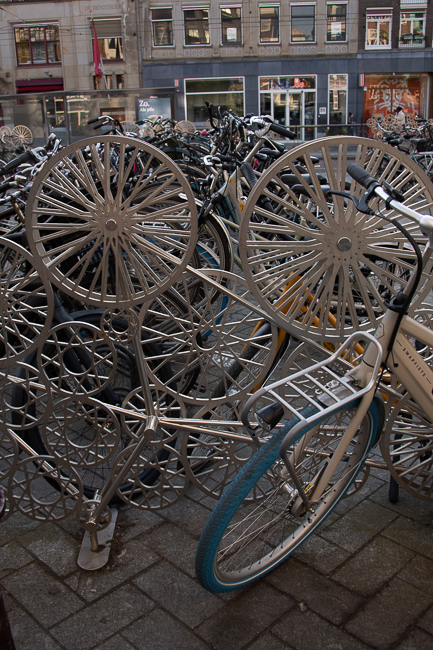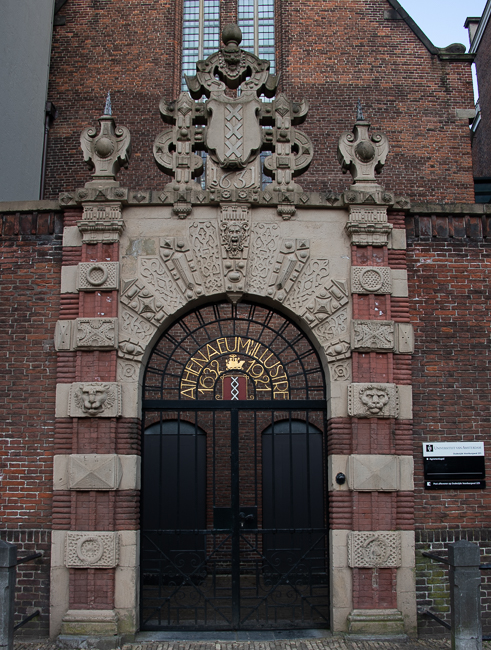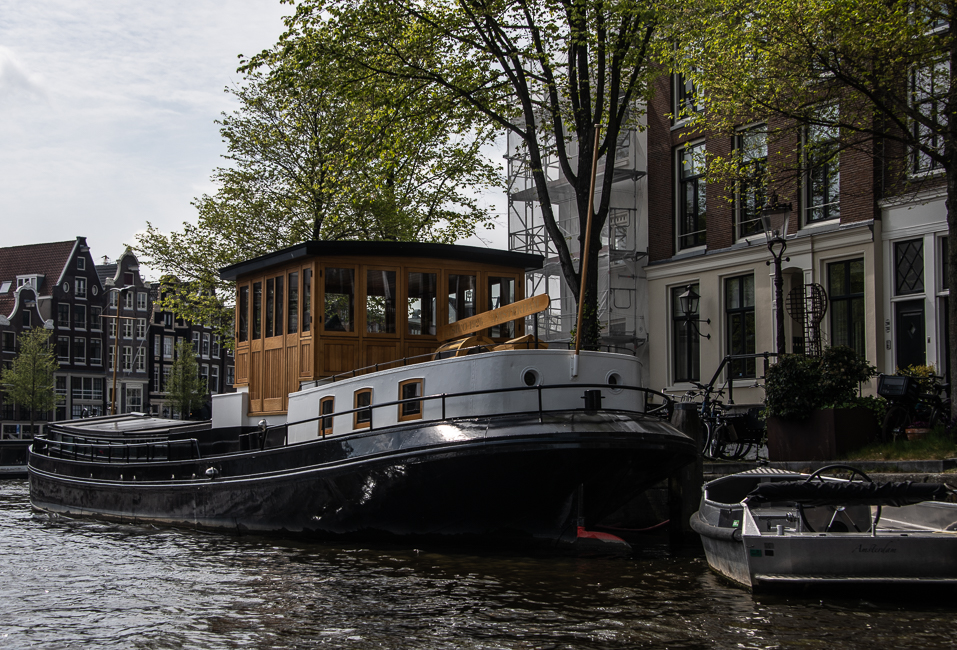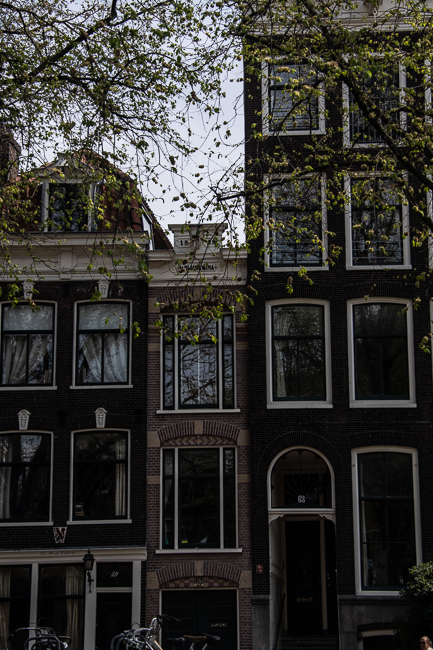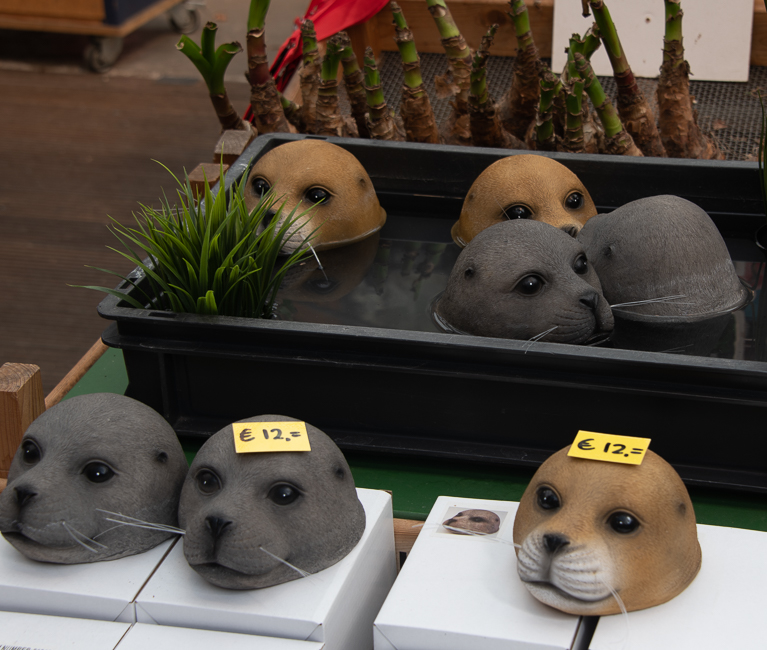May 2022
The De Waag was built in 1488 and served as one of Amsterdam’s main city gates. It closed at exactly 9:30 at night to keep out bandits, the poor and the diseased.
By the 17th century the city had expanded making the gates superfluous. At that time the building became a weighing house. Later this area was used as the spot for public executions. The cadavers were then taken to a similar old city gate building that housed the Surgeons Guild and one could watch public dissections.
These dissections were the setting for Rembrandt’s The Anatomy Lesson of Dr. Nicolaes Tulip.
The disgust does not end there, during WWII the entire area was wrapped in barbed wire and held Jews waiting transport to the camps.
This stone caps a bolt that marks sea level. Called Amsterdam’s Ordinance Datum it is the prime meridian elevation. Measurements from here were first taken in 1683.
The Westerkerk is a Reformed church within Dutch Protestant Calvinism. Built in the Renaissance style, construction began in 1620 with designs by architect Hendrick de Keyser who is buried in the church. The church was finished in 1631 by his son Pieter de Keyser.
Wandering with no purpose I tripped across this little area. Called the Begijnhof it is an enclosed courtyard dating from the early 14th century although nothing survived from that time.
It was originally built as a sanctuary for the Begijntjes, a Catholic sisterhood who lived like nuns, but took no monastic vows. The area still houses only women. Begijnhof includes the Amsterdam’s oldest surviving house Het Houten Huis that dates from around 1420.
The Begijnhof Chapel, a clandestine church, was completed in 1680.
This is all of the building that I could squeeze into a photograph. It sits on a very narrow canal and is very very large. It once served as the headquarters of the Dutch East India Company the first business in Amsterdam. Created in 1602 in Middleburg with Middleburg and Amsterdam being its two largest locations. The Dutch East India Company was the first company in the world to issue “shares”, thus making the Amsterdam Chamber of The Dutch East India Company the home of Shareholding, and trading. The Bourse of Amsterdam was the first stock exchange in the world. The Dutch East India Company was the most powerful company in the world during the 17th century, due to its trade with the orient, and particularly opium.
The City Hall Urinal has national monument status, it was once outside City Hall and built in 1926.
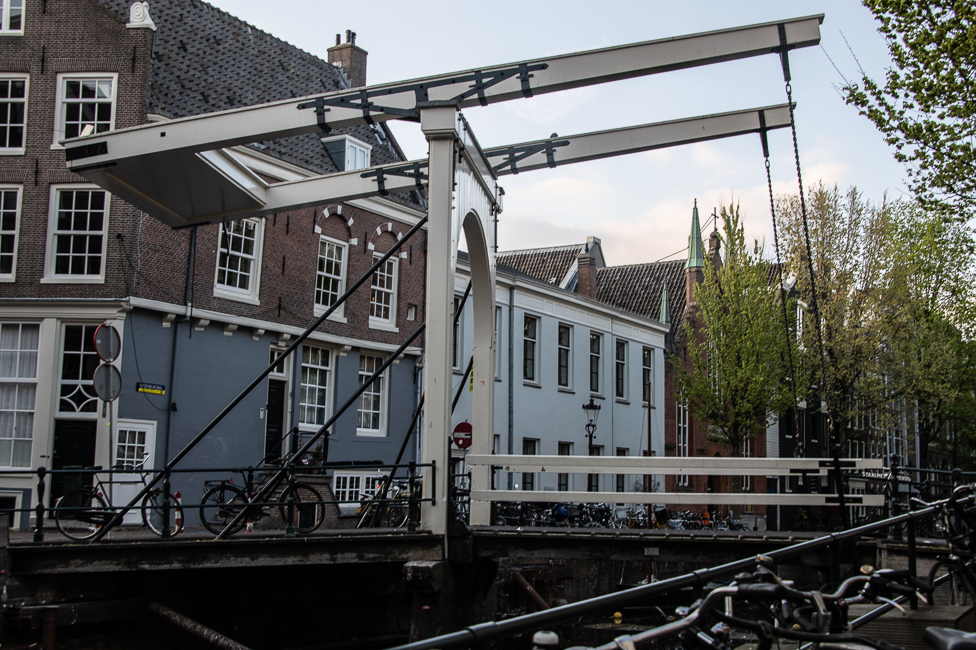
This is a bascule bridge. It is a moveable bridge with a counterweight that continuously balances a span, or leaf, throughout its upward swing to provide clearance for boat traffic. It may be single- or double-leafed.
It is said that Amsterdam has over 1200 bridges. I bring you but three.
*
Called the Blauwburg or “blue bridge” this one was originally a wood bridge painted the blue of the Dutch flag, and stood in the 1600s. This bridge replaced it in 1883, with this stone bridge inspired by the architecture of the bridges of Paris.
You can see the Imperial Crown of Austria on the top of the lanterns.
This taphophile could not leave Amsterdam without visiting at least one cemetery. I chose the Zorgvlied because it was easiest to get to. Situated on the left bank of the river Amstel, the cemetery was opened in 1870 by the city of Amstelveen which still owns and operates it, though since 1896 (when city lines were redrawn) it is located within the boundaries of the city of Amsterdam. This is one of Netherlands most famous cemeteries due to the large number of celebrities, especially from the literary and theater worlds, buried there, none of which I knew, sadly.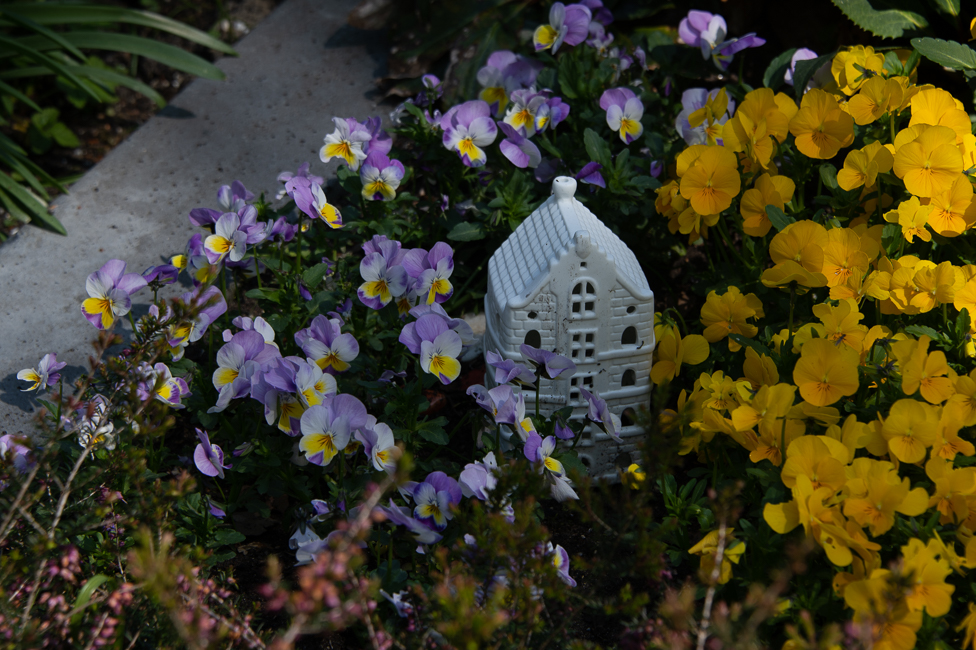
Designed, by Jan David Zocher, is in the English garden style. Zorgvlied was expanded in 1892 by Zocher’s son, Louis Paul Zocher, and again in 1900, 1919, and 1926, when it became a burial place for the upper classes who had often been buried in Westerveld in Driehuis.
This was one of the more unique graves, it is the grave of Annie M.G. Schmidt. She was called the mother of the Dutch theatrical song and the queen of Dutch children’s literature.
